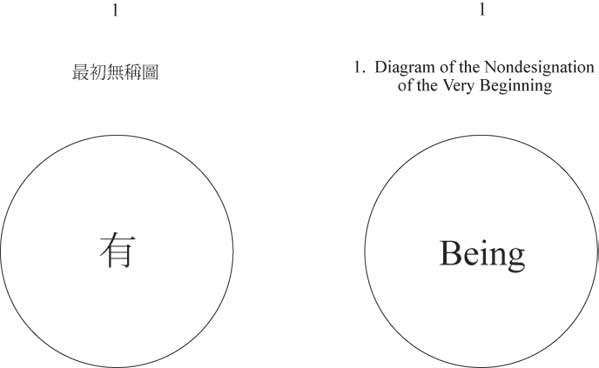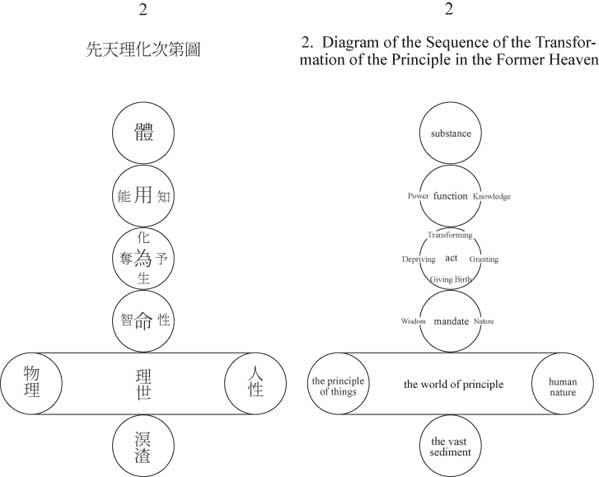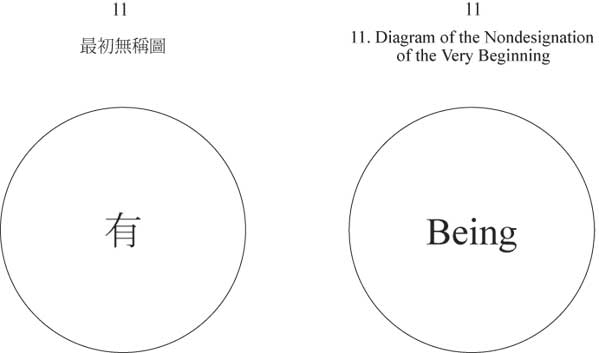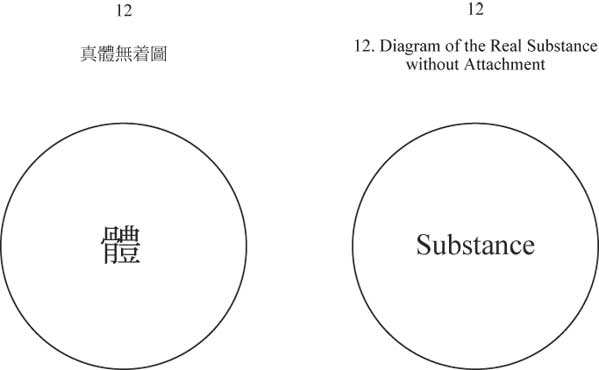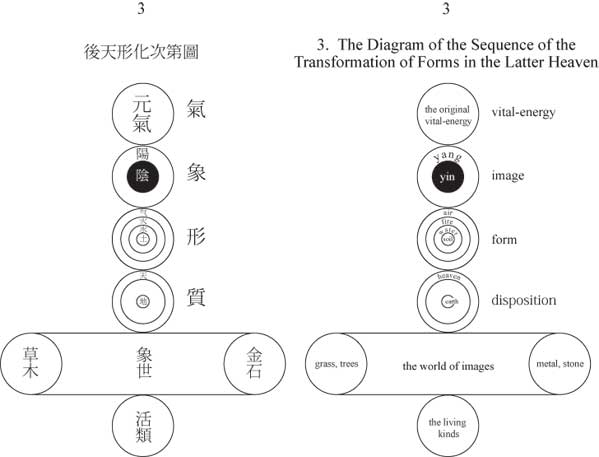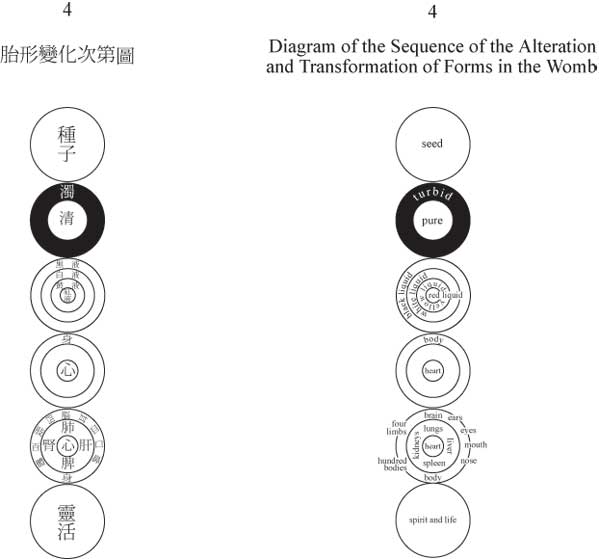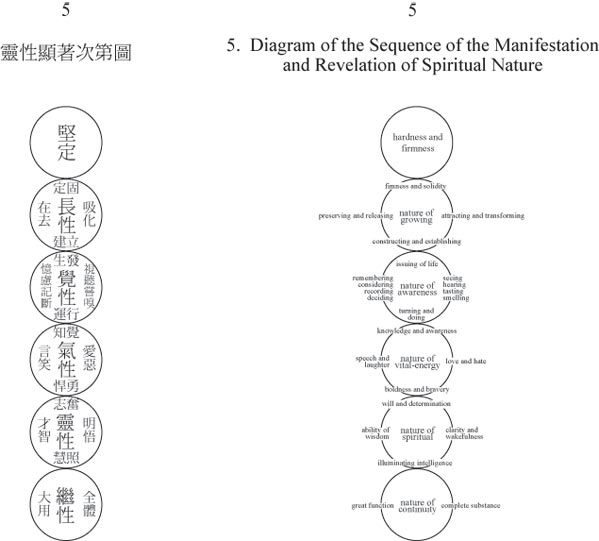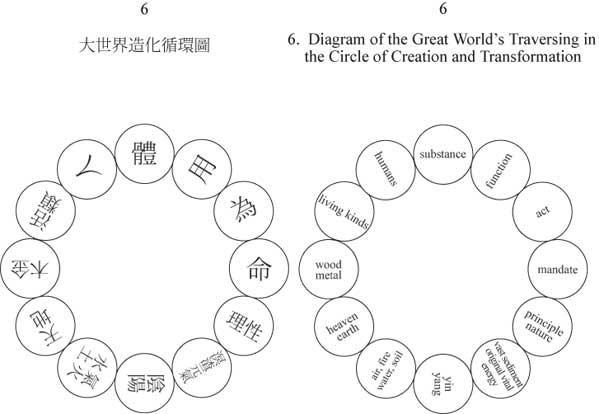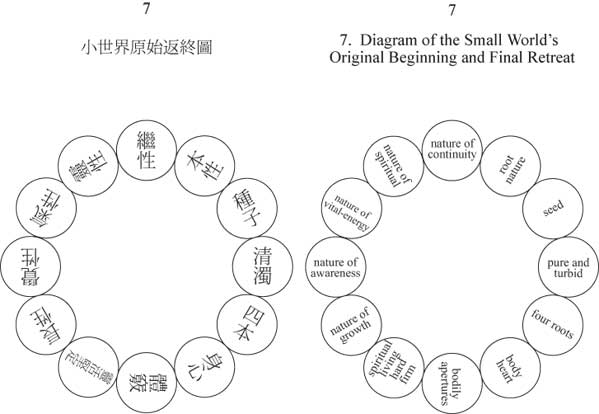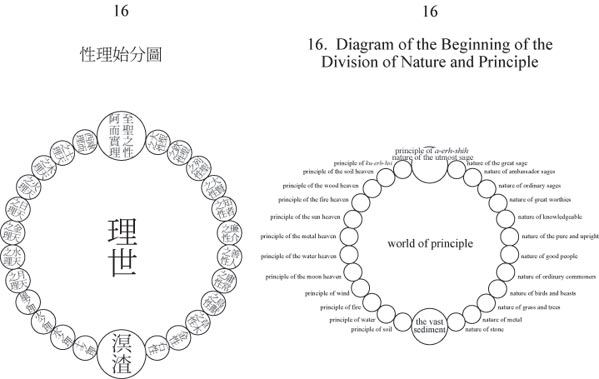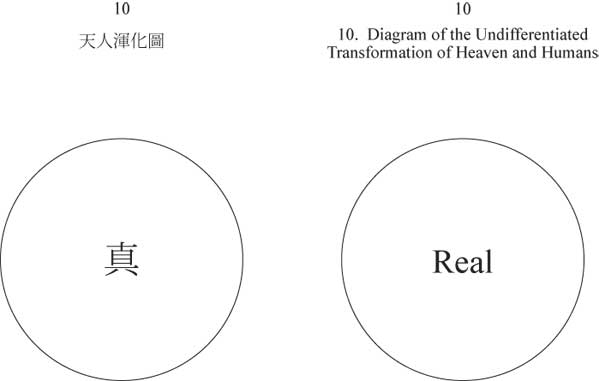The Unity of Being in Liu Chih’s “Islamic Neoconfucianism”
Sachiko Murata
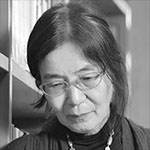
Her publications include The Sage Learning of Liu Zhi: Islamic Thought in Confucian Terms (2009), The Vision of Islam (with William Chittick, 2006), Chinese Gleams of Sufi Light (with William Chittick and , 2000), and The Tao of Islam: A Sourcebook on Gender Relationships in Islamic Thought (1992).
Articles by Sachiko Murata
The Unity of Being in Liu Chih’s “Islamic Neoconfucianism”
Podcasts by Sachiko Murata
From the middle of the seventeenth down to the end of the nineteenth century, the school of Ibn ‘Arabi had a significant presence in the Chinese language. The first Muslim scholar to explain Islamic teachings in Chinese was Wang Tai-yü, who published his major book in 1642. He tells us that his ancestor had come to China three hundred years earlier. He himself was educated in the traditional Islamic manner, and only when he was old did he begin to learn classical Chinese. His intention was to explain Islamic teachings to fellow Muslims educated in the Chinese manner and ignorant of the literatures of their own languages. As far as we can tell, up until this time most Islamic learning in China had been transmitted in Persian, though of course the Arabic Qur’an played the same basic role in China as it did elsewhere.
Wang Tai-yü called his major book The Real Commentary on the True Teaching (Cheng-chiao chen-ch’üan). It is a long study of the principles of Islam, focusing on metaphysics, cosmology, and ethics. In the Islamic languages, these topics are discussed mainly in the fields of philosophy and Sufism. We do not know for certain which Persian and Arabic books Wang Tai-yü was reading, but we do know that the most important and possibly the only books translated into Chinese before the nineteenth century were Mirsâd al-‘ibâd of Najm al-Din Râzi (d.654/1256), Maqsad-i aqsâ of ‘Aziz al-Din Nasafi (d. ca. 700/1300), and two of the treatises of ‘Abd al-Rahmân Jâmi (d.898/1492) – Lawâ’ih and Ashi”at al-lama’ât.
These four books are well known Persian texts by three famous Sufi masters, all of whom lived after Ibn ‘Arabi. By taking a quick glance at the three authors, we can readily see that Ibn ‘Arabi’s school of thought must have been seeping into the Chinese language. The earliest of the authors, Najm al-Din Râzi, was a disciple of Najm al-Din Kubrâ (d.618/1221), a well-known contemporary of Ibn ‘Arabi. Râzi’s Mirsâd al-‘ibâd, translated into English by Hamid Algar as The Path of God’s Bondsmen, is one of the most influential books on Sufism in the Persianate world – in other words, from Turkey, through Central Asia and India, and into China. Although it is quite theoretical in its own way, Râzi’s book shows no signs of being influenced by Ibn ‘Arabi’s teaching.
The same is not true of the works of ‘Aziz al-Din Nasafi, a disciple of Sa’d al-Din Hammûya (d.649/1252). Hammûya is an important author of Sufi theoretical works in both Arabic and Persian, but he has hardly been studied in modern times, partly because of the notorious obscurity of his works. He was acquainted with both Ibn ‘Arabi and Sadr al-Din Qûnawi and seems to have run in the same intellectual circles, though he cannot be said to represent the same perspective. As for Hammûya’s disciple Nasafi, his Persian works are largely responsible for popularizing theoretical discussions of the sort carried out by Ibn ‘Arabi and his followers. It is Nasafi who first uses the expression wahdat-i wujûd in Persian, and he also wrote a book called Insân-i kâmil, thus helping popularize this equally famous term. Nasafi was not a follower of Ibn ‘Arabi, but he does discuss many of his teachings in his books.
As for ‘Abd al-Rahmân Jâmi, he was probably the single most important propagator of Ibn ‘Arabi’s perspective in the Persianate world. All of his theoretical writings and much of his poetry expound the teachings of Ibn ‘Arabi and his major followers, especially Qûnawi, Farghâni, Jandi, Kâshâni, and Qaysari. The fact that Jâmi is the author of two of the four Islamic works translated into Chinese certainly suggests that it was difficult to study Islam in Chinese without being exposed to Ibn ‘Arabi.
Probably the single most important Muslim scholar to write in Chinese was Liu Chih, who lived about fifty years after Wang Tai-yü. It is he who translated the Lawâ’ih of Jâmi into Chinese, and he also is the author of the most influential book on Islamic thought in the Chinese language, T’ien-fang hsing-li, which he published in the year 1704. The expression hsing-li in the title means “nature and principle”. This is the standard designation for Neoconfucianism, which was the dominant school of Chinese thought for a thousand years down to the beginning of the twentieth century. The expression t’ien-fang means “direction of heaven”, and it is the name that Muslims gave to Mecca and to the Islamic world in general. Thus the title of Liu Chih’s book means literally “Nature and Principle in the Direction of Heaven”, that is, “Nature and Principle according to Islam”. One could even translate it as “Islamic Neoconfucianism”.
The very title of Liu Chih’s book suggests that it is a statement of the principles of Islamic thinking about God and the world in Neoconfucian terms. As for the book’s importance, the evidence suggests that it was considered the definitive statement of Islamic beliefs. It was republished twenty-five times between 1760 and 1939, and it is constantly referred to by Muslim scholars writing in Chinese.[2]
* * *
Liu Chih’s “Islamic Neoconfucianism” is divided into six sections. The actual written text of each is no more than thirty pages long. The first section is subdivided into five short chapters, which are followed by ten diagrams that illustrate the major topics in a schematic way. In each of the five remaining sections, Liu Chih analyzes one chapter of the first section with the help of twelve more diagrams. Thus he provides a total of seventy diagrams, ten belonging to the first section, and sixty to the five explanatory sections. Each of the sixty supplementary diagrams has an accompanying text of two or three pages.
Liu Chih calls the first section of the book “the Root Classic” (pen-ching). It presents basic principles of Islamic theology, cosmology, psychology, and prophetology. Throughout the Root Classic he provides references to his sources, and by far the most commonly cited are the four Persian books just mentioned.
The first chapter of the Root Classic describes how the macrocosm and microcosm – that is, the universe and the human being – originate from the One Being and then return to the One Being. In other words, it sets down the principle of what may be called wahdat al-wujûd, which is to say that it expresses the first principle of Islamic thought, tawhid or the unity of God, in terms of wujûd. However, Liu Chih mentions only a handful of Arabic and Persian words in the whole book, and he certainly does not mention wahdat al-wujûd or any other term associated specifically with the school of Ibn ‘Arabi. Moreover, we should keep in mind that there was nothing new in Neoconfucian thought about the oneness of being. The language of being had been formulated centuries before by the early Taoists, and it had become commonplace to refer to the first principle as Being (yu). Moreover, it had always been self-evident to the Chinese that the first principle is one. To say that the Real Being is one would surprise no one.
The second chapter of Liu Chih’s Root Classic explains how the attributes and characteristics of the microcosm correspond with those of the microcosm. The third chapter explicates the stages of human development from one seed to full spiritual perfection. The fourth chapter describes basic human virtues and the manner in which the various human types become differentiated. The fifth and final chapter represents a summary of everything in the first four chapters in terms of the original and final unity of all things. More specifically, the fifth chapter explains how human perfection alone is able to re-establish all things in the original oneness of being.
* * *
In the remainder of my paper, I want to offer a few examples of Liu Chih’s diagrams. I will also cite a few passages from the book in order to give a sample of the text that he is illustrating. Remember that throughout this discussion, much of what Liu Chih says has parallels in Neoconfucian texts. I will refer briefly to some of the well-known teachings of Ibn ‘Arabi’s school that may have inspired Liu Chih from the Islamic side.
The Root Classic is written in a standard, four-character pattern that I represent in English by stanzas. It begins as follows:
The Very Beginning has no designation,
the Real Substance has no attachment.
Only this is Reality-Being.
Holding the One, it contains ten thousand. (1:2–5)
Diagram 1 illustrates the nondesignation of the Very Beginning (the numbers of the diagrams correspond to their order in Liu Chih’s text, not the order in which I will discuss them). The term “nondesignation” recalls a number of parallel terms in Arabic, especially lâ ta’ayyun, “Nonentification”, an expression made current by Qûnawi and often used by Jâmi. Hence the first diagram illustrates the fact that wujûd in itself is, in Ibn ‘Arabi’s terms, not only “nondelimited” (mutlaq), but also “nondelimited by nondelimitation” (mutlaq ‘an al-itlâq). This is the unknown Essence that cannot properly be designated by any name – and of course, for the Chinese, to speak of it in these terms recalls the beginning of the Tao-te Ching, “The name that can be named is not the name”.
Diagram 2 (below) can be taken as an illustration of the following passage from the Root Classic:
The Only Substance turns and functions
and activity begins to emerge.
The Real Principle flows
and the mandate displays the original transformation.
At root it is knowledge and power,
then it is apportioned into nature and wisdom:
One Reality, a thousand apportionments. (1:8–14)
The diagram illustrates the preliminary stages whereby the One Reality undergoes transformation in order to make possible the appearance of the universe, which in Chinese terms is called “heaven, earth, and the ten thousand things”. Notice that, according to the title, this transformation takes place in the Former Heaven. This is a technical term that is contrasted with Latter Heaven. The Former Heaven designates the invisible principles that give rise to the visible universe, and the Latter Heaven represents the situation in the cosmos once the universe becomes manifest. In Islamic terms and as understood by Liu Chih, the Former Heaven represents what is commonly called the “arc of descent”, and the Latter Heaven represents the “arc of ascent”. In Islamic philosophy, these are commonly called “the Origin and the Return” (al-mabda’ wa’l-ma’âd).
Ibn ‘Arabi and his followers often discuss the structure of the cosmos in terms of the expression “two-bows’ length” (qâb qawsayn). The Qur’an tells us that when Muhammad ascended to God during the mi’râj, he reached the point of “Two bows’ length, or nearer” (53). This, by the way, is the only Quranic verse that Liu Chih cites in the whole text of “Islamic Neoconfucianism”. Like the Latin word arcus, the Arabic word qaws means both bow and arc of a circle. Thus, the verse can be read as referring to the two arcs that make up the circle of existence. The first arc is the descending flow of increasing differentiation that brings the universe into existence, and the second is the ascending return toward nondesignation. Human beings achieve perfection by ascending on the second arc and reattaching themselves to the origin. In other words, they achieve perfection by actualizing the totality of the circle of existence. One of the most detailed and systematic theoretical formulations of this journey, by the way, is provided by Sadr al-Din Qûnawi in his book Miftâh al-ghayb, “The Key to the Unseen”. Ibn al-‘Arabi frequently discusses this journey, but not with such clarity of focus.
By referring to the Former Heaven, Liu Chih is telling us that this diagram depicts the descending arc of the manifestion of wujûd. Notice that the uppermost circle is labeled “substance”, which is another name for Being. Here “substance”, however, should not be understood in the Aristotelian sense, where it is contrasted with “accident”. Rather, “substance” is a standard translation of the Chinese word t’i, which is contrasted with yung, typically translated as “function”. The relationship between t’i and yung, or substance and function, is parallel to that in Islamic thought between bâtin and zâhir, “inward” and “outward”. Function manifests the nature of substance, but substance in itself always remains nonmanifest.
In some diagrams Liu Chih refers to the First Principle as Being (e.g., Diagram 11, which is identical with Diagram 1), and in others as Substance (e.g., Diagram 12). He uses different names because the word Being designates the First Principle inasmuch as it is nondelimited and cannot be differentiated from anything else. In contrast, “Substance” alludes to the First Principle inasmuch as it can be differentiated from its own functions. Ibn ‘Arabi often makes the same distinction by using the standard theological terms “Essence” (dhât) and “attributes” (sifât). Qûnawi and his followers use the theological terminology, but they also refine the discussion by using terms like “Nonentification” for Essence and “First Entification” for God inasmuch as he possesses all names and attributes. They use the expressions ahadiyya and wâhidiyya in a similar way. Ahadiyya designates the exclusive and incomparable unity of the Essence, and wâhidiyya refers to the inclusive unity of God as First Principle, which gives rise to the universe.
The second circle from the top in Diagram 2 is labelled “function”. Thus, the diagram tells us that Substance, which is Being, has a dual Function, and that is knowledge and power. When Ibn ‘Arabi discusses knowledge and power, he often does so in the context of the “four pillars of divinity”, which are life, knowledge, desire, and power. That Liu Chih focuses on two primary divine attributes rather than four has much to do with his Chinese background. As he explains in some detail in the text, it is this polarity in God that is the root of yin and yang – two terms that are essential to Chinese cosmological thinking.
In the diagram, Function gives rise to Act. Thus in the first three circles we have a clear correspondence with the standard theological triad in Islamic theology: “Essence, attributes, and acts”. The Diagram describes Act in terms of four basic tendencies or attributes: transforming, producing, granting, and depriving. These terms, which derive from Neoconfucian cosmology, play an important role later on in the text in the explanation of the manner in which the cosmos unfolds.
The fourth circle is named “mandate” (ming). This, of course, refers to the “mandate of heaven”, which is much discussed in Chinese thought. The word is also translated as “destiny”. On the Islamic side, Liu Chih may have in mind qadar, which is commonly translated as “predestination”. Ibn ‘Arabi and his followers distinguish between qadâ or the divine “decree”, which is God’s desire for the cosmos as an undifferentiated whole, and qadar, which I would translate as “measuring out” or “determination”. Qadar is the manifestation within the creatures of the differentiated details that follow on the undifferentiated decree. Liu Chih sees Mandate as manifesting itself according to two basic attributes – wisdom (chih), which is inherent to the structure of the cosmos and is also a primary Confucian virtue; and “nature” (hsing), the same word that is used in the expression “nature and principle”, the designation for Neoconfucian thought. If we are looking for Islamic parallels for these terms, we might think of Ibn ‘Arabi’s discussion of nature, which, in its broadest sense, designates the Breath of the All-Merciful, the underlying stuff of the universe. The All-Merciful Breath becomes articulated by the divine words, which of course manifest God’s wisdom.
After these three preliminary levels of the unfolding of substance, we reach the World of Principle, which seems to correspond with the spiritual world in Islamic cosmology. This world embraces both the principle of all things and the principle of human nature. In other words, it brings together all the attributes and qualities that will subsequently be differentiated as the macrocosm and the microcosm.
The final stage of the arc of descent is called the “Vast Sediment”. This represents the undifferentiated matter that will eventually give rise to the differentiated things that we know as the visible world. In Ibn ‘Arabi’s cosmology it might correspond with the Dust (habâ), which is universal matter (hayûlâ). From this point on, the primal undifferentiation of matter is gradually organized with a view toward the return to the One Being.
In Diagram 3, Liu Chih gives an overview of the first stages of the Latter Heaven. As I said earlier, the Latter Heaven is the arc of ascent, which eventually leads back to the Real Being. In Diagram 3, Liu Chih traces the ascent from the lowest, most undifferentiated level up to the level of animals. He explains that what had been called “Vast Sediment” from the point of view of the descent is called “Vital Energy” from the point of view of the ascent. The word for vital energy is ch’i (Japanese ki), a well-known term in Far Eastern medicine and the martial arts.
As Vital Energy begins to manifest itself, it becomes differentiated into yin and yang. These two then give rise to the four elements, and the four elements produce heaven and earth. As is made clear by Diagrams 2 and 3, the first four stages of the Latter Heaven correspond with the first four stages of the Former Heaven. Hence, the World of Principle in the Former Heaven corresponds with the World of Images in the Latter Heaven. The World of Principle gives rise to the Vast Sediment, which is the Vital Energy that turns back toward the Origin. In the same way, the World of Images embraces inanimate things and plants, which lead to the appearance of animal and human life. Only from the human level is it possible to accomplish the return to the original Unity.
The use of the word “image” (hsiang) for the level of yin and yang is especially interesting. In Neoconfucian thinking, all things in the realm of manifestation are images of principles. There are obvious parallels here not only with the Quranic doctrine of signs (âyât), but also with the school of Ibn ‘Arabi, where the world of imagination plays a central role, and where “image” or “imagination” (khayâl) becomes a designation for everything other than God.
* * *
Although Diagrams 2 and 3 pertain respectively to the Arc of Descent and the Arc of Ascent, the relationship between the two diagrams is not obvious, because both need to be read from top down. The fact that Diagram 3 in fact depicts the Arc of Ascent will only become clear when we reach Diagram 6, which integrates the major elements of the two diagrams into a circle.
In Diagrams 4 and 5, Liu Chih outlines the unfolding of the human being on the Arc of Ascent. Diagram 4 describes the unfolding of the seed in the womb. Notice that the six levels of development in the womb coincide exactly with the six stages of development in the macrocosm as depicted in Diagram 3. Thus vital energy (which is the Vast Sediment) is equivalent to the seed in the womb. Yin and yang correlate with the turbid and the pure. The four elements correspond to the four liquids. Heaven and earth correspond to heart and body. The World of Images – which consists of stone, metal, grass, and trees – correlates with the differentiation of the organs and faculties. Finally, the living kinds in the macrocosm correspond with spiritual vitality, the last stage of development before birth. Discussion of this sort of development in the womb was common in Islamic philosophy, and among the Sufi authors known in the Chinese language, Nasafi has a good deal to say about it.
Diagram 5 gives us six stages of human development outside the womb, from birth to spiritual perfection. Notice that the discussion now has to do with the various attributes and qualities that become manifest in successive levels of the ascent toward God. Again, this discussion was common among the Muslim philosophers and was taken for granted in much of Sufi writing. Rûmi gives us famous examples of this “evolution” of the human individual from the inanimate level to life in God. The basic stages, in Islamic terms, are inanimate, vegetal, animal, human, angelic, and divine. Liu Chih labels the sixth level “the nature of continuity”, by which he means the conjunction of the perfect human being with the divine Origin, or union with the First Principle. Here again we meet the pair “substance and function”. The perfect human being achieves great substance and complete function – that is, the total realization of human potential.
Diagram 6 sums up the circle of macrocosmic existence that results from the combination of the Former Heaven and the Latter Heaven as illustrated in Diagrams 2 through 5. We see how the macrocosm appears from substance and descends down to the Vast Sediment, which is identical with the Original Vital-Energy. Then the movement turns upward, through yin and yang, eventually leading to human beings, who alone have the capacity to re-establish a direct, unmediated link with Substance itself, that is, with the One Being. Notice that Liu Chih depicts the universe in terms of twelve stages. Twelve, of course, is a cosmic number – the months of the year, the signs of the zodiac, the Chinese cycle of years.
Diagram 7 illustrates the circle of existence in terms of the micro—cosm rather than the macrocosm. Thus the original substance of human beings is the nature of continuity, that is, union with God. Their root nature is their spiritual substance, and this gives rise to the seeds that are deposited in the wombs. The various stages of descent from God lead to the appearance of the heart, or the spiritual side of the individual, and the body, the corporeal side; these two, you remember, correspond with heaven and earth. The diagram then maps the various stages of microcosmic development. Only in the last ascending circle, the “nature of the spiritual”, is the human reality fully apparent. Before that, human beings replicate the various lower levels of creation in their bodies and souls.
A great deal more might be said about the cosmological relationships that manifest the One Being. But I would be remiss if I did not refer to another central discussion in Liu Chih’s book, and that is the role of the prophets and the saints. In the writings of Ibn ‘Arabi and his followers, it is obvious that spiritual perfection cannot be achieved if human beings do not submit themselves to guidance. In good Chinese fashion, Liu Chih calls the prophets and saints “the sages and worthies”. He devotes a good deal of his book to explaining their cosmic function and the essential role of guidance in the achievement of human perfection. This is not the place to go into detail. Instead we can look at a diagram that illustrates in global fashion the correspondences between the microcosm and the macrocosm and, at the same time, shows how the sages and worthies play roles in the very structure of the cosmos. The type of thinking going on here, by the way, is not unrelated to Ibn ‘Arabi’s detailed explanation of the various sorts of rijâl al-ghayb – the men of the unseen world – especially in Chapter 73 of the Futûhât.
Diagram 16 depicts the World of Principle in detail. Remember that the World of Principle was shown in Diagram 2 as the fifth level of the Former Heaven. It was preceded by Substance, Function, Act, and Mandate and it embraces the principles of things and the principle of human nature. Diagram 16 unpacks these principles. In other words, it details the various archetypes in the Arc of Descent that subsequently give rise to the differentiation of both things and human beings in the Arc of Ascent.
At the very top, one circle brings together the principles of things and human nature. In other words, in their deepest reality, the macrocosm and the microcosm go back to a single source. Notice that this first circle has two names. As the principle of things it is called a-erh-shih. This word represents one of a dozen instances in which Liu Chih employs an Arabic word. The original is ‘arsh, that is, Throne. According to the Qur’an, the All-Merciful is sitting upon the Throne, and Ibn Arabi makes a great deal of the Throne’s association with the creative divine mercy. According to Liu Chih, the Throne is called “the nature of the utmost sage” from the point of view of the microcosm. The “utmost sage” is Muhammad. So the Throne and the Muhammadan nature are one reality. This, of course, fits in perfectly with the Quranic verses that tell us that Muhammad was sent as a mercy for all the worlds.
At the very bottom of the diagram, the two sides meet in the Vast Sediment, which represents universal matter or vital energy which gives rise to the Ascending Arc, as we saw in Diagram 3.
On the left-hand side of the diagram, Liu Chih depicts the macrocosm in terms of twelve descending stages. The first is ku-erh-hsi, that is, Arabic kursi, the Footstool, where God places his two feet. According to Ibn ‘Arabi, the two feet are mercy, and mercy mixed with wrath. Next come the seven heavens in order – here I give them their Chinese names. In the West, the planets are named for the Greek gods, each of which is an archetype for numerous cosmic phenomena. In keeping with the cosmic imagery of Chinese religion – as obvious, for example, in the I Ching – the Chinese names of the five planets other than sun and moon are derived from the five elements, and thus the correspondence between heaven and earth is plain in the very names of the planets. The four remaining levels in Liu Chih’s diagram depict the four elements as familiar to Islamic and Western thought – wind, fire, water, and earth.
On the right-hand side, Liu Chih depicts the descending levels of human possibility. Notice that he first mentions three sorts of sages. He probably has in mind the standard Islamic classification of the prophets into three sorts – ulu’l-‘azm or “possessors of steadfastness”, rusul or “messengers”, and anbiyâ’ or “prophets”. Then he mentions five more human types, giving us a total of eight human levels. These correspond with the Footstool and the seven heavens. In other words, they all pertain to the heavenly world. It is the heavenly connection that differentiates human beings from other earthly creatures.
Below the sages, we first have the “great worthies”, that is, the great saints. Then we have two levels that seem to correspond with lesser saints. Those with knowledge stand above those who are simply pure and upright. Then we have “good people”, who are presumably the believers, and finally “ordinary commoners”, who are presumably the unbelievers in all their variety.
Finally, the four lowest levels, corresponding to the four elements, represent the various types of individual creatures that prepare the way for the human make-up.
Notice that in this diagram, the higher embraces the lower, but the lower does not embrace the higher. This is a basic principle in cosmological schemes. Thus, for example, stone on the right-hand bottom is the lowest level of individual existence in the world, and it is presupposed in all the other levels. Metal has the qualities of stone, but it also has something more subtle that differentiates it from stone. So also, at each level, the higher possesses the qualities of the lower, but it also has something else that gives it its superiority. The “great worthies”, for example, have the qualities of purity, uprightness, knowledge, and something more. Liu Chih explains this in quite a bit of detail in various places.
To conclude this discussion, let me quote a few words from the final chapter of Liu Chih’s Root Classic. In it, he describes how the perfect sages reach the stage of continuity and reintegrate the whole universe into the One. In this final chapter, he has explained Being in terms of three levels of unity. This is illustrated in Diagram 9. The first is called the “Real One”. It represents the undivided nature of both substance and function in the One Being. The second is the “Numerical One”, and it is the function of the One Substance, a function that gives rise to the universe. The third level is the “Embodied One”, which is the function that brings things back to the One through human perfection. All three ones are essentially the same One Being.[3] Thus we have Diagram 10, showing that the final realization is the same as the Origin.
These are the final words of the Root Classic:
The [three] ones return to the Root Suchness,
and heaven and human are undifferentiatedly transformed.
The things and the I return to the Real,
and the Real One circles back to the Real.
The things are not mutual obstacles
and the human is not weary with desire.
The subtle meaning of each is disclosed
and seen here is the Root Suchness.
In the beginning was the Reality-principle
and now is the Reality-guise.
When Reality-being and Reality-guise are seen,
the seed and the fruit are complete. (5.61–72)
Reprinted from the Journal of the Muhyiddin Ibn Arabi Society, Vol. XXXVI, 2004. [1]
Annotations
[1] A version of this paper was originally presented at the twentieth annual symposium of the Society, entitled “The Unity of Existence: Ibn ‘Arabi and His School” held at Worcester College, Oxford, 3-4 May 2003.
[2] For more details on Wang-Tai-yü, Liu Chih, and Sufism in the Chinese language, see my Chinese Gleams of Sufi Light: Wang Tai-yü’s Great Learning of the Pure and Real and Liu Chih’s Displaying the Concealment of the Real Realm (Albany: SUNY Press, 2000), which includes a translation of Liu Chih’s Chinese version of Jâmi’s Lawâ’ih along with a new translation of the Lawâ’ih itself by William C. Chittick.
[3] For a detailed explication of the “three ones”, see Wang Tai-yü’s Great Learning of the Pure and Real, translated in Chinese Gleams.

